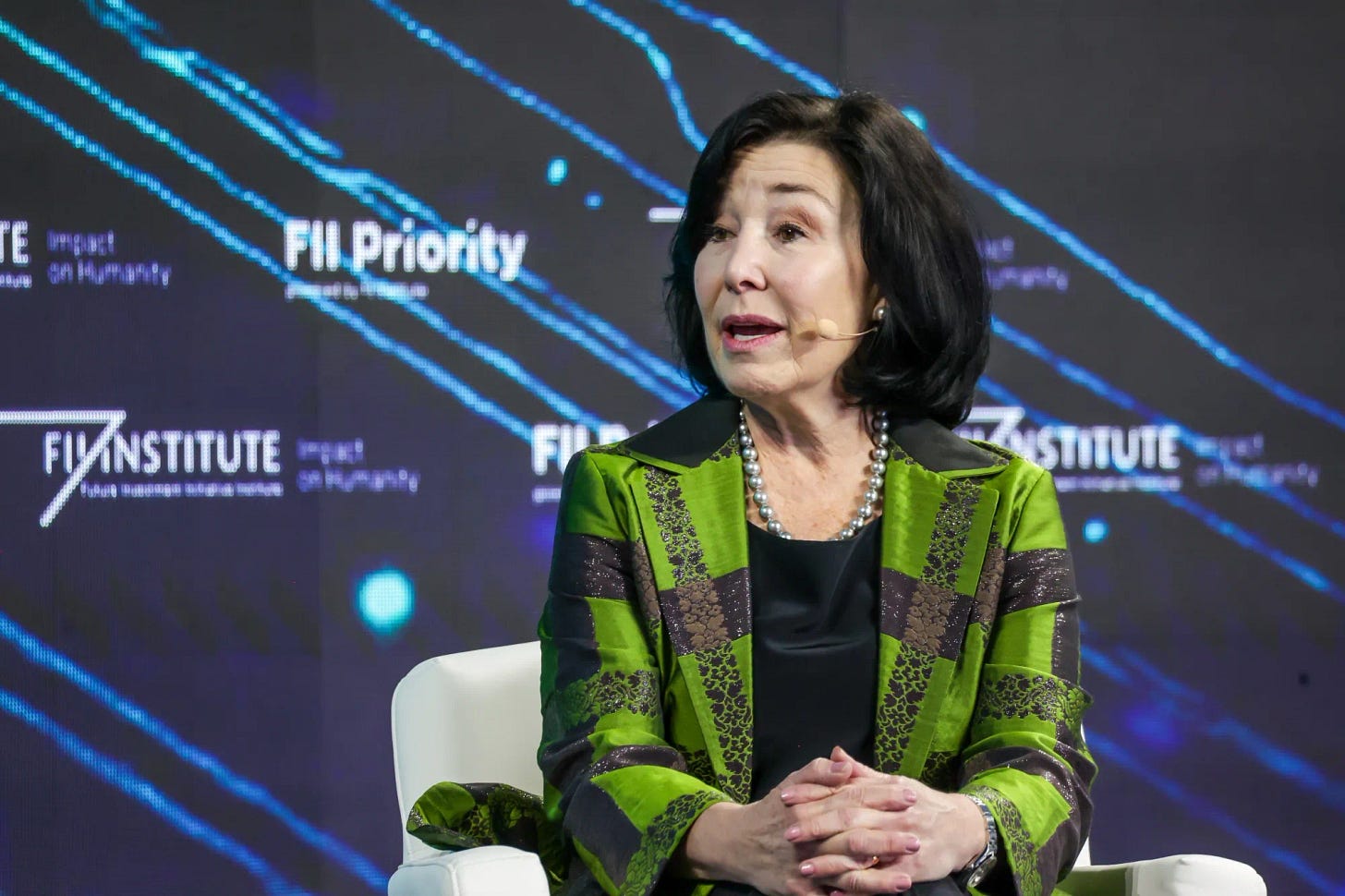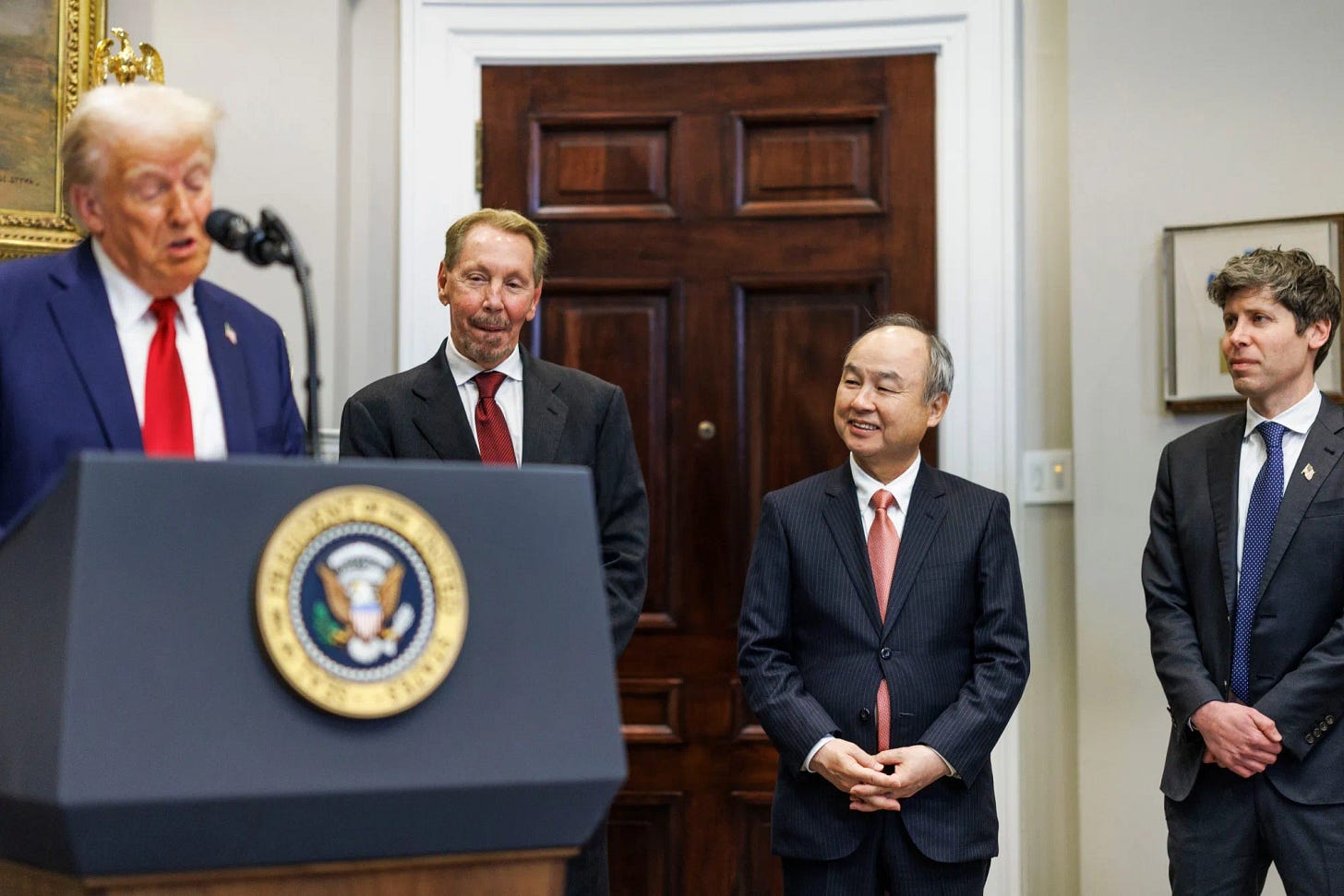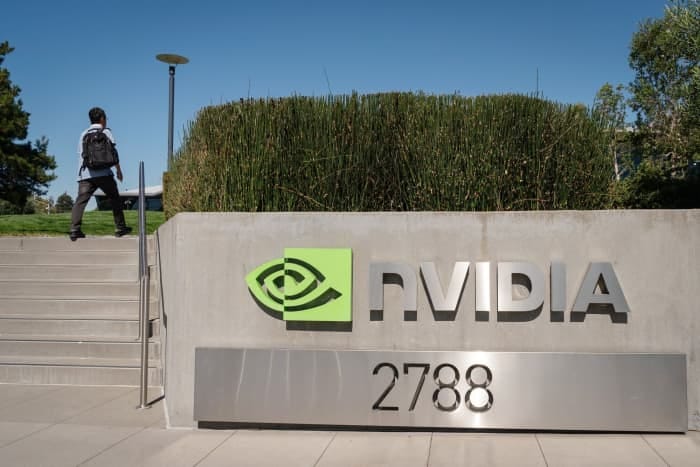
AI: A close-up of Oracle's AI Data Center 'OCI' unit. RTZ #820
This AI Tech Wave has seen some remarkable transformations of iconic big tech companies from what they’ve been to what they’re now rapidly becoming, with green lights from investors. Everyone of the ‘Mag 7s has their version of this story, from Meta of late, to of course Microsoft, Google, Amazon, Apple, Tesla/xAI and the one that enables them all, Nvidia. But that also doesn’t cover some other iconic names that are rapidly also undergoing this AI transformational journey.
One of hem is of course Oracle, the ‘software database’ company, that is rapidly becoming the AI Data Center builder. Especially as the key infrastructure building partner of choice for OpenAI, and its investment partner Softbank, for the multi-hundred billion Stargate AI Data center project.
Oracle has come a long way on this journey. Now emerging in its new form. Taking a leading role in this multi-trilliong dollar AI Data Center capex boom, among other ‘Neocloud’ companies. To now being the fourth major AI data center company behind Amazon AWS, Microsoft Azure, and Google Cloud. With a market cap of over $650 billion, driven by both its traditional software and now AI infrastructure businesses.
Bloomberg has a beefy piece on Oracle’s transition into a global AI data center company, “Oracle Rides Major Deals With OpenAI, Nvidia to Turn Around Cloud Business”. Worth reading in full:
“Oracle Corp.’s cloud infrastructure unit is a key reason for the company’s stock price increase, making Larry Ellison the second-richest person in the world.”
“The AI boom has increased demand for computing and storage over the internet, with Oracle gaining a foothold through major customers like TikTok and OpenAI.”
“Oracle is spending tens of billions of dollars to develop large data centers, which has led to a negative annual cash flow for the first time since 1990, raising questions about the longevity and margins of its cloud business.”
Oracle Chairman Larry Ellison changed his mind on the importance of cloud computing, leading the company to relevance in the industry.
It starts with a great hook:
“Oracle Corp.’s Larry Ellison used to scoff at the idea of cloud computing, saying in 2008 that it was “complete gibberish.”
“Now, the success of Oracle’s cloud infrastructure unit is why the company’s stock price has soared and made Ellison, its chairman and co-founder, the second-richest person in the world.”
And then the on-ramp to AI ‘riches’:
“The AI boom has dramatically increased demand for computing and storage over the internet. Oracle, a software company that had long struggled to find its niche in this market, gained a foothold through scoring major customers. Today, it’s helping power Elon Musk’s xAI from a data center in Utah, assembling a cluster of tens of thousands of AI chips for Nvidia Corp. near Singapore and recently inked what is likely the largest single cloud deal ever with OpenAI, the leading artificial intelligence company.”
With unprecedented challenges and opportunities ahead:
“Oracle is on the hook for tens of billions of dollars to develop unprecedentedly large data centers amid energy and material shortages. That includes a plan to spend more than $1 billion a year just to power one new megasite in West Texas with gas generators rather than wait for utility connection, according to people familiar with the plans.”
And a path long ways away from traditional software models, a topic I’ve discussed in some detail:
“With all of this spending, Oracle recorded a negative annual cash flow for the first time since 1990. And questions remain about the longevity and margins of offering infrastructure to train AI models.”
The path to today was not a straight line:
“Oracle, founded in the 1970s, had long faded from tech prominence. On the road to its return in the AI era were internal battles to convince Chief Executive Officer Safra Catz to invest in the cloud, recruitment of key customers like TikTok and the rise of a brash executive named Clay Magouyrk. Bloomberg spoke with more than 30 current or former employees and customers to understand how Oracle can deliver on its towering promises. They detailed spiraling costs, accelerated timelines to satisfy OpenAI, regulatory roadblocks and the hiring of hundreds of former Amazon cloud staffers, speaking anonymously to discuss the inner workings of a famously private and litigious company. ”
“As cloud computing picked up steam in the late 2000s, Ellison had little reason to be excited. Oracle’s namesake database, which is purchased outright and installed directly on customer servers, is one of the world’s great cash businesses. Adopting a cloud sales model, where users rent access to software, would almost certainly come with lower profits and a need to collaborate with rivals.”
“After years of writing off the cloud as marketing, Oracle’s tone changed as its business came under fire. Amazon.com Inc. pushed cheaper database options on its cloud customers. Application rivals like Salesforce Inc. promised easier installation and updates. Ellison saw the need to get Oracle’s Fusion apps — commonly used for finance and resource planning — on the cloud, according to people familiar with his thinking at the time.”
“There were competing efforts through the 2010s within Oracle to build a cloud for internal and customer use. An initial attempt, led by Thomas Kurian and launched in 2012, saw limited success.”
“A separate group, made up largely of Amazon alumni led by Don Johnson, pushed an approach called bare metal, in which clients wouldn’t have to share their servers with other renters, allowing Oracle to target privacy-focused users. The group also focused on building smaller data centers, which let them expand in countries that weren’t yet viable for industry leaders.”
“The bare metal approach won the blessing of Ellison, who remains a key decisionmaker despite handing off the CEO title more than a decade ago. The new product came to be known as Oracle Cloud Infrastructure, or OCI. Kurian departed the company in 2018 after his approach was sidelined. He then joined Google to lead its competing cloud service and remains in that position.”
That key decision then leads to today for OCI, going up against Amazon AWS and others in AI Data Centers and Power:
“When offering the new product, Oracle had to overcome a long-held reputation for aggressive sales strategies. Major pitches for OCI include cheaper pricing thanks to a simplified set of products and good integration with other clouds. Oracle salespeople often take jabs at Amazon Web Services’ sprawling set of tools, telling customers that paying for Amazon’s cloud means subsidizing expensive moonshots like its satellite project, Kuiper.”
The piece goes through this history in some detail, getting to TikTok through its ongoing political turmoil:
“By far the biggest win in this period was TikTok. The ByteDance Ltd.-owned social media company needed to expand its US infrastructure while under scrutiny from lawmakers over its links to China. Oracle, a company versed in national security whose chairman and CEO were supporters of the Republicans then in power, seemed a natural choice.”
TikTok was the accelerator into data centers, that led to OpenAI:
“OCI is like before and after TikTok,” said Tony Grayson, a former Oracle executive who led the company’s data center build-out around the time. The new customer forced the company to think on a scale it never had before, Grayson said. In 2022, TikTok announced that all US user traffic would flow through Oracle servers.”
“Annual revenue from the new customer rapidly passed $1 billion and, for a period, TikTok’s business was larger than the entire rest of OCI combined, according to people familiar with the figures. Oracle also built experience in AI infrastructure, running thousands of Nvidia graphics processing units — chips used for AI work — for TikTok even before the ChatGPT craze.”
Oracle internally still had a ways to go to making up its mind on commitment to AI data centers at scale:
“Within Oracle, there was long disagreement about the purpose of OCI. Some leaders saw it as a way to shield the database business and modernize applications. Others sought to compete with Amazon and Microsoft Corp. for general cloud work and grab a piece of a market worth hundreds of billions each year.”
Safra Catz, chief executive officer of Oracle Corp.Photographer: Zak Bennett/Bloomberg
“It wasn’t easy to convince CEO Catz of the expansive vision. She expressed skepticism due to high costs of operating data centers and lower margins of the business, people familiar with her thinking said. This cost consciousness fueled OCI’s initial focus on small data centers. But she and other traditional company leaders became convinced as massive deals such as TikTok, and later OpenAI, materialized.”
And the emergence of a new leader, Clay Magouyrk, 39, with a promising future within Oracle as President of Oracle Cloud Infrastructure (OCI):
“Internal accolades have flowed to Magouyrk, the division’s leader. The 39-year-old has rapidly climbed company ranks and reports directly to Ellison. He was one of OCI’s first employees after a stint at Amazon and recently relocated to Nashville, where Oracle has pledged to move its headquarters. In June, he was promoted to president, and is seen by company leaders as a potential successor to his 81-year-old boss.”
““Sometimes you look back and say — I’m not sure that I was entirely qualified at each step of the way,” Magouyrk said on the Modern CTO podcast in July 2023. “But it seems to have worked out so far.”
“Those who have worked with him describe Magouyrk as highly effective and conflict prone. He once told an executive that his actions were “f—king stupid,” in a room full of leadership, according to allegations in a 2021 lawsuit that claimed a toxic work culture at OCI. Blunt bosses are typical in a company run by Ellison, who once described his leadership style as “management by ridicule.”
“In the early days of OCI, the division was known as “Sparta.” It could pay its workers more than other parts of Oracle, was based out of Seattle rather than the Bay Area, and adopted the AWS practice of constantly shedding lower performers.”
“OCI’s importance has grown as the cloud has become a bigger part of the company’s business. Today, about 23,000 employees report up through Magouyrk. Over the last two years, more than 600 workers have joined from Amazon, according to an analysis by Workforce.ai. Amazon’s recent five-days-a-week return-to-office rule has made the poaching easier, as OCI remains largely a hybrid or remote workplace, people at the company say.”
And OCI is now not just a business of convenience, thanks to AI:
“Today, AI is the biggest driver of OCI’s growth. The majority of Oracle’s backlog, or booked deals, are tied to customers training or deploying AI models with GPU-based servers, according to a person familiar with the figures.”
And gets the story to OpenAI, via the White House:
“OpenAI is slated to become Oracle largest customer and has marketed the work as “Stargate,” an effort first announced in January at the White House alongside President Donald Trump. The companies have struck deals for more than 5 gigawatts of computing power, an unprecedented sum and enough energy for millions of American homes.”
US President Donald Trump, and from left, Oracle’s Larry Ellison, SoftBank Group Corp.’s Masayoshi Son and OpenAI’s Sam Altman, at the White House Jan. 21 to announce the companies’ Stargate AI project.Photographer: Aaron Schwartz/Sipa
“Work for OpenAI is happening on an aggressive timeline. The data centers are targeted for completion by early 2027, with many servers running as soon as next summer, according to people familiar with the plans. Facilities are being designed for training AI models with the assumption that they could also to power the applications of those trained models, which is called inference.”
“Providing infrastructure for AI training is generally thought to be a lower margin business than inference because it requires more advanced semiconductors and cooling. Exact timing and design details for the OpenAI work could still change, the people said.”
The opportunity has led to Oracle building some key skills and capabilities that were not in its toolbox, despite financial uncertainties and challenges:
“Finding data center developers and power providers to support this project at palatable prices has been a challenge, people involved with the development said. Costs for many goods and services have gone up over the last year owing to tariffs and vendors capitalizing on intense demand. Plus, it can take years to get approval and infrastructure to draw the scale of electricity needed from local grids.”
“The site Oracle plans to power entirely with gas generation is located in Shackleford County, Texas, near another Oracle server farm in Abilene. It is being developed by DigitalBridge Group Inc.’s Vantage Data Centers and will have an compute capacity of 1.4 gigawatts, making it among the largest known sites.”
And it’s found its own key capability in AI data centers vs peers:
“Part of OCI’s popularity with AI firms is its long-standing focus on bare metal servers. This has become the standard arrangement for AI work, and Oracle was first among major vendors to offer it. Users and employees also point to Oracle’s networking quality and willingness to do high levels of customized work.”
And it’s differentiation and leadership is getting noticed:
“Semianalysis, a popular industry analyst, listed Oracle Cloud near the top of its rankings for AI infrastructure vendors in March, citing its cost-effectiveness, networking quality and strong customer service.”
“They’re aggressive on price, which definitely helps,” said David Talby, CEO John Snow Labs, which trains and deploys AI models in health care. His company picked OCI in part because the offering had high performance and was well optimized for use with Nvidia AI chips.”
Oracle also has another key customer of note, with its own moat:
“Another of Oracle’s largest AI customers is Nvidia, which uses OCI for internal development and to power its own cloud infrastructure service. The chipmaker, codenamed “pathfinder” internally, rents capacity from an Oracle cluster of H100 chips in Japan and from a data center being built on Indonesia’s Batam Island. Oracle is also in talks with Meta Platforms Inc. and Musk’s xAI for further capacity, according to a person familiar with the plans.”
But make no mistake, Oracle’s OCI business has a long way to go from number four in AI Data Centers:
“Oracle’s cloud business is still orders of magnitude smaller than Amazon, Microsoft and the No. 3 provider, Alphabet Inc.’s Google. But plenty of room for growth exists. The market generated almost $100 billion in revenue in the most recent quarter and is expanding about 25% year over year, according to Synergy Research Group.”
And funding questions beyond today’s relative momentum driven market:
“The big question is how Oracle will fund this development and what it does to the company’s profitability, said Mark Moerdler, an analyst at Bernstein. Still, the company hasn’t had to borrow money to develop its centers like smaller rivals such as CoreWeave Inc.”
“We believe the margin will rebound and cash flow will be substantial once they get through this investment phase,” Moerdler said, comparing this moment to Microsoft’s cloud transition under Satya Nadella. “Oracle is going through a business model transformation that is even more impactful over a shorter period of time.”
The piece also has some useful charts and graphs also worth some attention.
But the broader point holds, that Oracle has rapidly transformed itself into a key AI Infrastructure company, and it’s going beyond an ‘add-on’ to an ‘AI Native’ capability. Today in the service of key customers like OpenAi, TikTok/Bytedance, Nvidia, and others. But tomorrow a potentially key Oracle new business beyond its bread and butter software databases.
Oracle under Ellison and Catz have come a long way. And poised to go further in this AI Tech Wave. Stay tuned.
(NOTE: The discussions here are for information purposes only, and not meant as investment advice at any time. Thanks for joining us here)

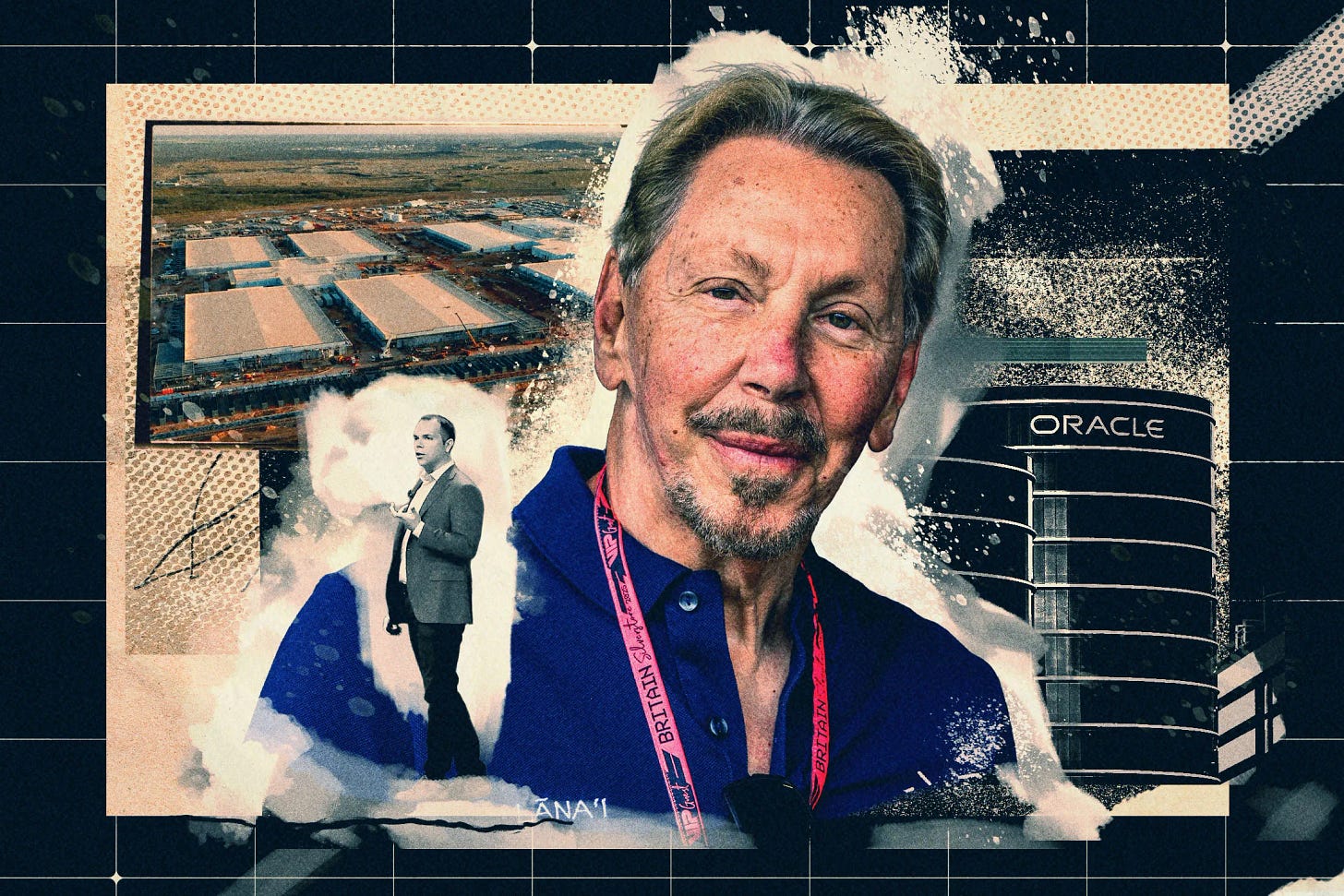

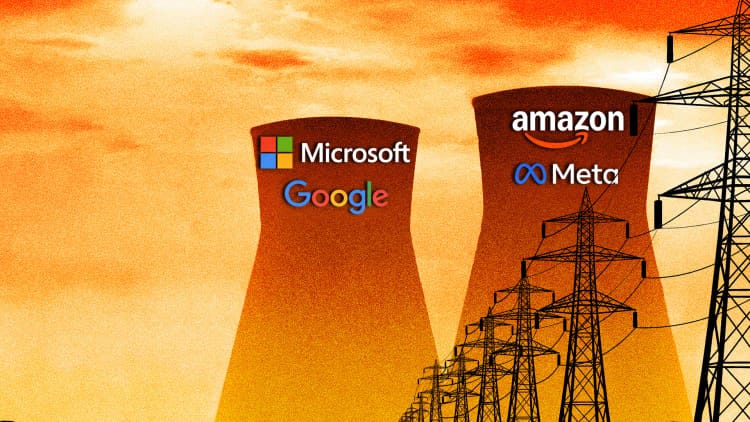
![TikTok Algorithm Explained 2025 - Viral Tricks [UPDATED] TikTok Algorithm Explained 2025 - Viral Tricks [UPDATED]](https://substackcdn.com/image/fetch/$s_!GeFe!,w_1456,c_limit,f_auto,q_auto:good,fl_progressive:steep/https%3A%2F%2Fsubstack-post-media.s3.amazonaws.com%2Fpublic%2Fimages%2Fd9dd6be0-55ab-40fe-b96c-d1fd682cc7af_1125x600.jpeg)
